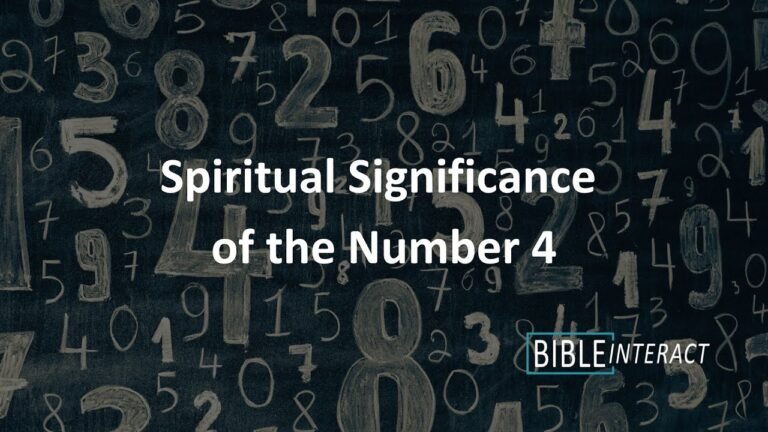Symbolism and Significance of Animals in the Bible
The animals of the Bible serve as powerful symbols and lessons woven throughout the sacred texts, illuminating the deep connections between humanity and the natural world. From the gentle dove that signifies peace to the mighty lion representing strength and courage, these creatures not only enrich the narratives but also offer profound insights into moral and spiritual teachings. Exploring the roles and representations of these animals reveals a tapestry of faith, culture, and the enduring bond between God and creation, inviting readers to reflect on their significance in both ancient and modern contexts.
What are the four wise animals mentioned in the Bible?
In the book of Proverbs, wisdom is often found in unexpected places, and this notion is beautifully illustrated through the mention of four small creatures. Proverbs 30:24 highlights the significance of these animals, describing them as “little but exceedingly wise.” This teaches us that wisdom does not always come from the grand or the powerful; sometimes, it is the humble and seemingly insignificant that hold valuable lessons.
The first of these wise animals is the ant, known for its industrious nature and ability to work together for the common good. Next, we encounter the conies, or rock badgers, which demonstrate the importance of finding shelter and community in safe places. Then there are the locusts, which remind us of the strength in unity and cooperation to achieve great goals. Finally, the spider teaches us about resilience and resourcefulness, weaving its web with precision and purpose.
By examining these four creatures, we can glean insights into diligence, community, teamwork, and adaptability. Each animal embodies a unique aspect of wisdom that can guide us in our daily lives, encouraging us to embrace the lessons found in the small and humble. Ultimately, Proverbs invites us to look beyond ourselves and learn from the world around us, recognizing that wisdom can be found in the most surprising of places.
What animals in the Bible are considered divine?
In the Bible, various animals hold profound symbolic significance, representing themes of sacrifice and atonement. Among these, the red heifer stands out, as it is associated with purification rituals in ancient Israel. Similarly, rams and ewe lambs are often seen as offerings, embodying innocence and the concept of substitutionary sacrifice, which foreshadows the ultimate sacrifice of Jesus Christ.
The he-goat and nanny goat also play critical roles in biblical symbolism, particularly during the Day of Atonement when one goat is sent into the wilderness, symbolizing the removal of sin. Turtledoves and pigeons, often used in sacrificial contexts, reflect humility and simplicity, emphasizing that even the poorest could participate in rituals of worship and atonement. Each of these animals serves as a reminder of the deeper spiritual truths woven throughout the biblical narrative.
Additionally, the bronze serpent, though unique in its representation, offers a powerful prefiguration of Christ’s redemptive work. This serpent, lifted up in the wilderness for the healing of Israelite sin, mirrors the New Testament’s portrayal of Jesus being lifted up on the cross. Collectively, these animals illustrate the intricate connections between the Old and New Testaments, revealing a divine plan of salvation that resonates through the ages.
What is the total number of animals mentioned in the Bible?
The Bible is a rich tapestry of narratives and teachings, and it includes a diverse array of animal species that hold significant meaning within its texts. In total, over 120 distinct species are mentioned, reflecting the cultural and spiritual context of the times in which the scriptures were written. Each animal often symbolizes deeper themes, serving as metaphors for human traits or divine qualities.
These animals range from familiar domesticated creatures like sheep and goats to majestic wild animals such as lions and eagles. The variety showcases not only the natural world known to ancient peoples but also offers insights into their relationships with these creatures. For instance, the lamb is frequently associated with innocence and sacrifice, while the serpent represents temptation and deceit.
The alphabetical listing of these animals in the Bible provides a unique perspective on their importance in scriptural narratives. By ordering them by their English names, readers can easily explore the multifaceted roles these creatures play in biblical stories, from the creation accounts in Genesis to the prophetic visions in Revelation. This compilation underscores the enduring connection between humanity and the animal kingdom throughout the biblical narrative.
Unveiling Divine Messages Through Creatures
Throughout history, many cultures have believed that animals serve as messengers from the divine, guiding and inspiring us with their presence. From the majestic eagle soaring high to the humble butterfly fluttering by, each creature embodies unique symbolism and wisdom. By observing their behaviors and attributes, we can uncover profound insights into our own lives, encouraging us to reflect on our choices and paths. Whether it’s the quiet strength of a wolf or the playful spirit of a dolphin, these divine messages remind us to embrace the interconnectedness of all living beings and seek harmony within ourselves and the world around us.
Exploring the Spiritual Roles of Animals
Animals have long held a significant place in human spirituality, serving as symbols of guidance, protection, and transformation across various cultures. From the majestic eagle representing freedom and vision to the steadfast wolf embodying loyalty and teamwork, each creature carries unique traits that resonate deeply within the human psyche. These spiritual connections often manifest in folklore, mythology, and religious practices, where animals are revered as messengers of the divine or as embodiments of specific virtues. By understanding these roles, we can gain deeper insights into our own spiritual journeys and the natural world surrounding us.
In many indigenous cultures, animals are seen as spiritual guides that offer wisdom and support to those who seek their presence. Rituals and ceremonies often honor these beings, reinforcing the belief that they possess a sacred connection to the Earth and the cosmos. This reverence fosters a sense of unity between humanity and nature, reminding us that we are part of a larger web of life. As we explore the spiritual significance of animals, we are invited to deepen our appreciation for their roles in our lives, encouraging a harmonious coexistence that nurtures both our spirits and the environment we inhabit.
The Hidden Meanings Behind Biblical Beasts
Throughout the Bible, various animals are imbued with profound symbolism, each representing deeper spiritual truths and moral lessons. For instance, the lamb, often associated with innocence and sacrifice, embodies the essence of purity and redemption, culminating in the ultimate sacrifice of Jesus Christ. Similarly, the serpent, frequently depicted as a symbol of temptation and sin, serves as a reminder of the human struggle between good and evil. These creatures are not merely part of the narrative; they carry rich allegorical meanings that have been contemplated by theologians and scholars for centuries.
Beyond their immediate representations, these biblical beasts invite readers to explore the complexities of faith and morality. The lion, representing strength and courage, calls believers to stand firm in their convictions, while the dove symbolizes peace and the Holy Spirit, encouraging a life guided by love and compassion. By understanding these hidden meanings, we can gain deeper insights into the teachings of the Bible, enriching our spiritual journey and enhancing our appreciation for the timeless wisdom contained within its pages.
Nature’s Role in Sacred Narratives
Across cultures and religions, nature serves as a profound backdrop for sacred narratives, intertwining the human experience with the divine. From the towering mountains that symbolize strength and endurance to serene rivers representing the flow of life, natural elements become powerful metaphors in spiritual teachings. These landscapes not only inspire awe but also provide a canvas for moral lessons and existential reflections, reminding us of our interconnectedness with the world around us. As stories unfold within these vibrant settings, they highlight the sacredness of creation, inviting individuals to find meaning and purpose in the rhythms of nature. Ultimately, nature emerges as a vital character in these narratives, guiding believers on their spiritual journeys and fostering a deeper appreciation for the environment that sustains us all.
Animals as Symbols of Faith and Morality
Throughout history, animals have served as powerful symbols of faith and morality, embodying virtues that resonate deeply within human culture. From the lion representing courage and strength in various religious texts to the dove symbolizing peace and hope, these creatures have often been woven into moral narratives that guide behavior and inspire belief. In many traditions, the wisdom of animals teaches lessons about compassion, loyalty, and sacrifice, encouraging individuals to reflect on their own values and actions. By connecting with these symbolic representations, people find a deeper understanding of their faith and an opportunity to cultivate a more ethical life, illustrating the profound relationship between humanity and the natural world.
The animals of the Bible serve as powerful symbols that enrich the spiritual narratives and teachings found within its pages. From the gentle lamb representing innocence to the mighty lion embodying strength and courage, each creature plays a vital role in conveying profound truths and lessons. Exploring these biblical animals not only deepens our understanding of the text but also invites us to reflect on the enduring connection between humanity and the natural world. Through their stories, we find timeless wisdom that resonates across generations, reminding us of the intricate tapestry of life and faith.






